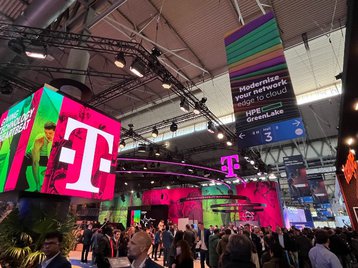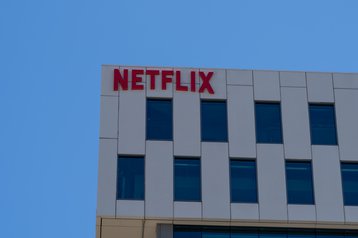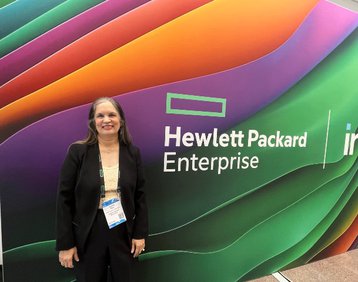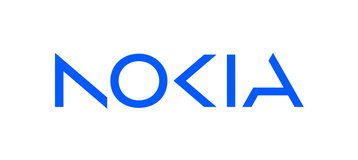Another year, and another Mobile World Congress has come and gone. While the year's event may have seen some unseasonably cold weather in Catalonia, there was plenty of heated discussion during the week.
This year’s event in Barcelona was built around the tagline ‘Velocity - Unleashing tomorrow’s technology - today.’ But the arguments of today appeared mostly to be centered on yesterday's issues about who is going to pay for tomorrow.
Telcos versus Big Tech companies rumbled on... again
No discussions or debates seemed more heated than the never-ending telcos versus Big Tech debate.
Telcos have long argued that 'Big Tech' companies operating over the top of the former's infrastructure need to do more to fund network rollouts, as these companies are some of the largest traffic generators for these networks.
It’s prompted the European Commission to launch a formal consultation into who should stump up the costs of providing these services, with operators arguing that the cost of maintaining and developing networks is becoming increasingly expensive.
During the opening keynote at MWC, CEOs from some of Europe’s biggest telcos expressed their frustration at the situation and urged Big Tech companies to pay what they call a 'fair' share.
Bemoaning the current European telecoms landscape, Orange CEO Christel Heydemann subtly hinted that the big tech companies, such as Google, Meta, Netflix, and co should pay more.
“From fierce competition to sometimes outdated regulations, our sector is dealing with contradictory requirements,” she said.
Discussing the matter of who should cover network costs, Heydemann calls the situation unsustainable for mobile operators, claiming that five of the largest online traffic generators account for 55 percent of daily traffic on the telco networks.
Deutsche Telekom CEO Timo Höttges was even more critical of the hyperscalers. He said that European operators spent €55 billion ($58bn) on infrastructure alone last year, compared to €1bn ($1bn) by some of the so-called hyperscalers.
“Is it a fair deal that hyperscalers and streamers are using our infrastructure for free?” asked Höttges. “Shouldn’t there be a fair sharing between, let’s say this money which we are investing into the infrastructure and the one we are monetizing?”
It was a subject that even the European Commission’s industry chief Thierry Breton weighed in on, noting the EU is keeping an ‘open-minded’ approach.
But were the Big Tech companies taking this all on the chin? No chance. Netflix co-CEO Greg Peters returned the serve the following day.
Peters revealed that Netflix has pumped $60 billion over the past five years into content for its viewers, the equivalent of more than 50 percent of its revenue.
“Some of our ISP partners are worried about rising costs, but let’s look at the stats: Internet traffic has consistently grown at around 30 percent a year over the past five years. ISPs have managed this growth, keeping their cost flat over the same period by using efficiency gains within the network,” Peters said.
Prodding a bit further, Peters said that Netflix operates at much lower margins than either BT or Deutsche Telekom, noting that “we could easily argue that these telcos should pay entertainment companies for the cost of the content because a tax like that would have a significant adverse effect.”
"No winners"
PP Foresight TMT analyst Paolo Pescatore told DCD that both parties need one another to thrive. But he does, however, expect the situation to rumble on for some time.
“This has always been a hard sell. While you cannot ignore the momentum behind this movement, it still won’t be easy to get it over the line [in terms of legislation].
“In part, you can sympathize with all parties. Telcos have made this investment and are not seeing a similar step increase in revenue. While all of the big tech and content providers are connecting with users in a different way. Should all traffic be treated equally, a point that content providers would argue? There will be some traffic that needs to be prioritized such as mission-critical data.”
He expects that regulators will be very careful when assessing how to approach the matter.
"However, change is needed as we live in different times. Whatever the outcome, legislation needs to adapt and be flexible to the changing environment," he concluded.
There’s a good chance the same things will be said at next year’s MWC event.
Open RAN progress on show
Deutsche Telekom's Höttges was keen to point out during that same keynote that operators should embrace Open RAN, which was another hot topic at MWC.
A number of telecom companies penned Open RAN partnerships during the event, and in the lead-up, including Vodafone, Orange, Deutsche Telekom, Mavenir, and many more.
Open RAN seeks to promote a new breed of telecoms kit that allows providers to ‘mix and match’ solutions from multiple vendors, which is impossible under the current network setups. In theory, it gives mobile operators much more freedom and flexibility around selecting vendor partners, and has become increasingly popular with telcos in recent months.
Hewlett Packard Enterprise (HPE) was another company throwing its hat into the Open RAN ring, as part of a collaboration with Intel and nVent to create a new scalable Open RAN liquid-cooling offering.
Speaking to DCD, HPE head of RAN Geetha Ram said that the progress within the O-RAN industry is proving doubters wrong, with operators deploying the technology at a fast rate.
“When I was last at this event in 2019 there were a lot of people skeptical about Open RAN,” said Ram, who praised the flexibility of the technology.
"The reason why Open RAN is so important is that the spectrum in 5G is huge. You have the lower end of the spectrum, such as 4G, then the mid-band, plus the millimeter wave, and you know, all of the higher frequencies for IoT applications and so on. The opening up of the RAN space with an open and flexible infrastructure is very, very important in 5G as it can tap into new applications at the Edge and for specific use cases."
Fed up Nokia keen to shake off past with rebrand
Meanwhile, Nokia showcased its anyRAN offering during the show as part of plans to drive CloudRAN partnerships.
According to the company, this will help mobile operators and enterprises choose purpose-built, hybrid, or CloudRAN solutions regardless of their business model, while Nokia noted it has strengthened its existing partnerships with cloud and data center infrastructure leaders.
Arguably even more eye-catching from Nokia was the vendor's decision to undergo a rebrand, fresh with a new logo.
Nokia Networks SVP & BU head, partner cloud RAN solutions Pasi Toivanen told DCD the company wanted to shift its perception away from being a mobile phone company, instead showcasing its work as a networks vendor.
"We wanted to move away from being seen as a company that manufactures mobile phones because this is in our past," Toivanen said.
"We needed the reset to show how we are operating in today's technology landscape. The whole digitalization around the connectivity, IoT, 5G, and cloudification is where we are at now."
Nokia-branded phones are still sold, but by HMD Global Oy, which acquired the license back in 2016.
Satellite's here to stay - can it be an alternative to tower infrastructure?
The growing popularity and fascination with satellite-to-mobile connectivity was also prominent at this year's event.
Companies including BICS, AST SpaceMobile, and Lynk were present, while South Korean giant Samsung revealed its two-way satellite connectivity system for smartphones.
Operators such as Vodafone revealed partnerships in this space during MWC, with its Spanish unit unveiling plans for a series of pilot projects this summer to test voice and data services with AST SpaceMobile to verify direct-to-device 5G, 4G, and 2G connectivity via satellite in Spain.
Philippines operator Globe announced its testing direct-to-cell services with Lynk Global, with trials around Short Messaging Service (SMS) and emergency alerts in partnership with Lynk.
But why is there such a buzz around satellite connectivity in the telecoms industry?
Lynk chief commercial officer Dan Dooley said it’s because satellites can offer something different to traditional methods of providing mobile connectivity, such as telecom towers. He said that satellites can expand their reach to areas that don't financially make sense for telecom towers.
"There's about 78 percent of the physical globe, including oceans, that doesn't have connectivity and it's an economic problem. It just doesn't make sense to put a physical CAPEX-intensive and OPEX-intensive cell tower in a place that has few people," said Dooley. "There are places in the world that are economically better covered from space."
He adds that access to space connectivity is affordable and more financially appealing than mobile network operators building towers.
For more remote islands, in particular those in the Pacific which are susceptible to natural disasters, satellite connectivity is more economical, adds Dooley.
[Editor's note: Next week we'll be heading to Satellite 2023 to further delve into the future of space-based connectivity]
And the rest of the show…
As for the rest of the show, there was plenty of metaverse talk, plus the usual demos of AR and VR on display for attendees to play with.
ChatGPT also got a mention or two during some of the keynotes, but for now, doesn't appear to be putting journalists out of work.
There was also talk of 6G already. Given that 5G services launched commercially in 2019, carriers are still early in their journey, but have begun to think about what comes next.
Ericsson, Nokia, and Huawei all showcased early 6G testing, while a keynote explored various use cases for the technology, including 8K and 16K video streaming, advances within the metaverse, and cloud gaming.
It remains to be seen what will be on show next year or the next big trend in telecoms. It will likely be more of the same and, who knows, we may even have more of a resolution to the network costs debate.





